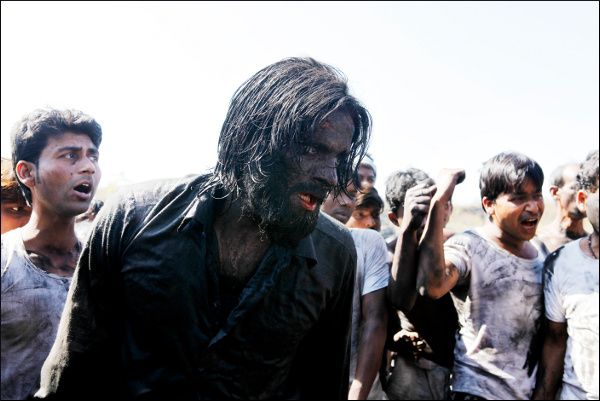For a long time, Hindi films have been quite formulaic: in most of them, a boy and a girl fall in love and participate in a few great dance numbers. This is how commercial Hindi films have tended to be and how, to a great extent, they are understood to be by international audiences. It’s not that there are no directors who can make deep, artistic films – there are and have been – but that few of them are lucky enough to release their movies all over India.
"Gangs of Wasseypur is one of the best ways for non-Hindi speakers to learn a whole slew of slang. Yet potential students should be careful: most phrases used in this film are beyond uncouth."
Director-producer Anurag Kayshap has made a career out of challenging the status quo and distributing his films across the country. After gaining public attention with such works as Black Friday and No Smoking, Anurag became a household name with Dev D, the modern-day version of the classic story of Devdas. The success of Dev D eventually led to his two-part film Gangs of Wasseypur, which premiered in its five-hour-plus entirety at the Cannes Film Festival. The film starts in the 1940s, when British colonialism was coming to an end, and depicts the lives of thugs and gangsters in a mining town. It’s full of shootouts, cold-blooded murder, lawlessness, and political corruption, and almost all the characters speak harshly to one another. Whether the dialogue is between a mother and her child, a man and his lover, or a gangster and his colleague, the language is usually rough. This makes Gangs of Wasseypur one of the best ways for non-Hindi speakers to learn a whole slew of slang. Yet potential students should be careful: most phrases used in this film are beyond uncouth.

In one scene, one character says to her son, “Humre bete hoke ki dhai rupay wali randi ke jahan tumhare bapu muh maame jaate hain?” This line is full of words that should be remembered, but probably not repeated. Literally, it means: “Are you our son or are you the son of that prostitute your father used to go to who charges two rupees?” In Hindi, “wallah” or “wali” refers to a person (the spelling depends on the grammatical structure of the sentence). In this case, “dhai rupay wali randi” literally means “two-and-a-half rupee prostitute.” Another common, everyday use of the word “walla” is in “dudhwallah,” which means “milk person.”
"The characters are trying to survive in a dark and twisted world, expressing themselves through harsh language and violence."
Regarding the music, one of the songs in the film is called “Keh ke lunga.” It was used in television and radio ads, despite the fact that the Central Board of Film Certification initially removed the song from the film altogether. The title is a play on words. In Hindi, “lena” translates as “to take.” However, many Hindi speakers, particularly from the north, use this term to mean something else: “to make fun of.” Since “Keh ke” means “to inform someone,” the whole expression literally translates as: “I will let the person know when I make fun of him or her.” Nevertheless, the expression is often interpreted as “to take someone’s ass,” which is probably why the Central Board initially had problems with the song.
Undoubtedly, the most famous quote in the film is, “Ye Wasseypur hai, yahaan kabootar bhi ek pankh se udta hai air doosre se apni izzat bachata hai.” Literally, it means: “This is Wasseypur, and here, even a pigeon flies with one wing and uses the other to hide its honor.” In a place as rough as Wasseypur, in order to achieve anything, one always has to be on his or her guard to protect him or herself and his or her “honor.” One can easily see how this quote sums up the sentiments of all the characters, who are trying to survive in a dark and twisted world, expressing themselves through harsh language and violence.




